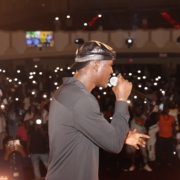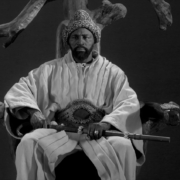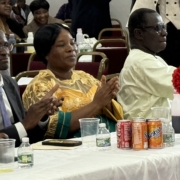Hiroshima, Nagasaki, and the moral duty to remember: 80 years later, the work of peace remains
On August 6, 1945, and again three days later on August 9th, the cities of Hiroshima and Nagasaki became silent witnesses to the darkest potential of human invention, and the world changed forever. Two bombs. Over 200,000 lives lost. And with them, the illusion that humanity could wield absolute power without consequence.
The threat of nuclear conflict is no longer a distant memory
Eighty years have passed since those harrowing days, and the scars are still visible. On landscapes, bodies, and collective memory. But remembrance alone is not enough.
In 2025, the threat of nuclear conflict is no longer a distant memory but a terrifying possibility. Global powers are modernizing their arsenals. Nuclear weapons echo in war rhetoric. Missiles are being tested. Wars in Gaza, Sudan, or Ukraine remind us how quickly violence escalates, how human life becomes collateral. Hiroshima is not ancient history. It is a mirror held up to today.
That’s why the Community of Sant’Egidio alongside the Archdiocese of Nagasaki is organizing a Vigil for Peace from August 5 to 8, 2025. Two symbolic chapels: the Chapel of the Sacred Heart of Jesus and Mary in New York, and the Chapel of Our Lady of Nagasaki in Japan will remain open day and night, as spiritual beacons of memory and hope.
It is not just a commemorative gesture; it is an act of resistance. For 75 continuous hours, people of different faiths and backgrounds will gather to pray, to reflect, and to recommit to peace. The vigil will stretch across time zones, linking the Basilica of Urakami ground zero of the second atomic bombing to cathedrals and community spaces across the globe.
The work of peace is not naïve. It is disciplined.
The Community of Sant’Egidio is not new to the work of peace. From brokering the 1992 peace accords in Mozambique, to interreligious dialogues in Sudan, Ukraine, and the Democratic Republic of Congo, their legacy proves that peace is not a naïve dream but a courageous discipline. Their presence at the site of unspeakable suffering is a reminder: the work of healing does not belong only to history, it belongs to us.
What began with a prophecy of annihilation must now evolve into a promise of solidarity. Hiroshima and Nagasaki are not just cautionary tales. They are the result of power unchecked, of grief unspoken, of silence turned into complicity. But they are also stories of survival, resilience, and the sacred urgency of saying “never again.”
Let us not forget that the statue of Our Lady of Nagasaki, charred and cracked from the blast, now stands as a symbol of hope and intercession. From her scorched hands to ours, the torch of peace must be carried forward.
On this anniversary, remembrance is not passive. It is a moral stance. A commitment to choose peace where others choose force. To defend life where others gamble with death. To speak truth where silence is more convenient.
80 years later, Hiroshima still asks the same question:
Will we remember enough to ensure it never happens again?








Leave a Reply
Want to join the discussion?Feel free to contribute!